#mesopotamian gods
Text
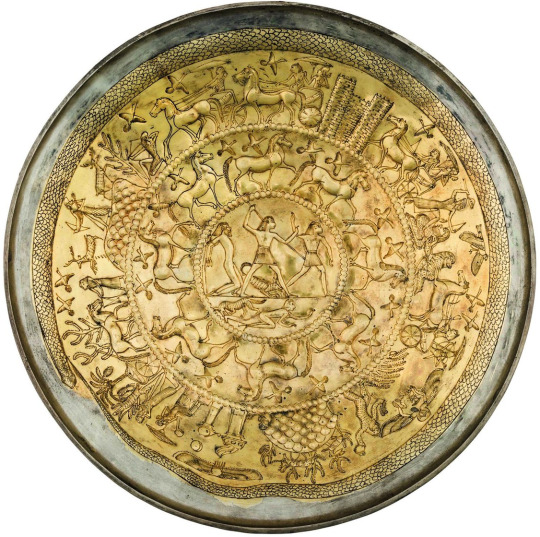

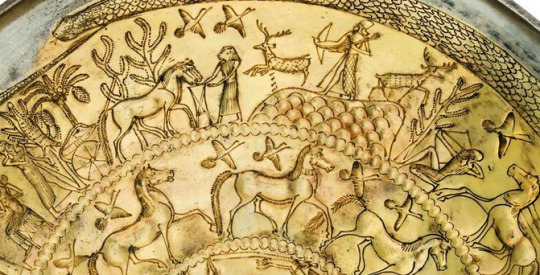

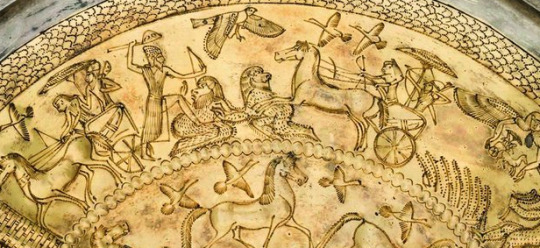
Phoenician Bowl with encircling Serpent
Bernardini Tomb (Palestrina, Italy)
c. 700 BCE
The National Etruscan Museum of Villa Giulia
Rome, Italy
#cyprus#rome#italy#egypt#egyptian gods#canaan#canaanite gods#phoenicia#phoenician gods#aram#aramean gods#syria#syrian gods#levantine gods#mesopotamia#mesopotamian gods#pagan gods#polytheism#archeology#magic#witchcraft#witchblr#paganblr#occult#uroboros#ouroboros#warfare#hunting#soldiers#birds
905 notes
·
View notes
Text
everyone forgets there was a whole mesopotamian myth about ishtar blessing enbies with foresight and healing and being awesome. the whole myth was about how hot enby people are that one seduced the god of death to save ishtar and so they were cursed to be hated by their households, but loved by ishtar and blessed, and even more blessed if they remembered ishtar's blessing, so much so that she would dance at their feet. even even more so if they worshipped her in return. so yeah, enbies are divinely awesome, cursed for being too hot
#enby#lgbtq#myth#mythology#mesopotamian mythology#ishtar#mesopotamian gods#gay#lgbt#lgbtqia#androgynous#enbies#non bianry#divinity
325 notes
·
View notes
Text
ACTUAL Mesopotamian Pagan Goddesses You Can Work With INSTEAD Of Lilith 🌙

So if you've seen the old post of mine touching on an antisemitic "Demonolatry" subreddit, you'll probably have heard about the common argument antisemitic practitioners make to try and justify appropriating Lilith and a lot of other Jewish daemons.
A lot of these people will try to propose that working with Lilith isn't cultural appropriation, because she predates Judaism and is actually a "MeSoPoTaMiAn PaGaN gOdDeSs". And I don't think it takes a genius to realise that this is absolute horse shit lol. Just look at any Mesopotamian deities list and she's not there.
These people are most likely referring to similar spirits such as Lamashtu, Kilili, Ki-sikil-lil-la-ke, Ardat-Lili, and even Inanna/Ishtar in some instances. There's also the family of desert-dwelling night spirits that comprise of the Lilu and the Lilitu/Lili daemons.
While Lilith may have originated from or was based off of these daemons, they are not the same as Lilith. And I get that people have their own UPGs on certain entities being aspects of one another and such, but if that entity is part of a closed practise, you are in no place to even have a UPG on them to begin with. It comes from a practise that you aren't a part of, therefore you have no right or reason to have a UPG on it. Please just leave closed practices alone.
To my knowledge, one of the first times Lilith was documented was in the Dead Sea Scrolls, along with the daemon race of Lilin. The Dead Sea Scrolls is a Jewish/Hebrew text. So the idea that Lilith predates Judaism is just not true, and it's clearly an excuse made by people who appropriate her in an effort to brush off any accusations of their cultural appropriation and covert antisemitism. Lilith and the Lilin are only loosely based on the Lilitu wind spirits; They are not synonymous with one another. Anyone who tries to claim they are is just blatantly uneducated and/or antisemitic.
The whole idea of Lilith having origins in Mesopotamian mythology can all be traced back to a mistranslation. The BS-Free Podcast has an episode on this and it goes into depth about this mistranslation. I highly recommend checking out their podcast episode here!
⭒☆·━━━━━━━•( 🌑 )•━━━━━━━·☆⭒
In an attempt to combat some of this antisemitic fuckshit, I wanted to make an entire blog post dedicated to the goddesses and daemonesses of ancient Mesopotamia that you can work with instead of Lilith! I've had this idea for a little while now, but didn't really know who to include or how to construct this until now.
I also have another post in the making which will be a more UPG based post and will also include sigils, conjuration chants, correspondences, illustrations, etc. This current post merely exists to function as a guide and a sort of directory, with mostly historical information about each spirit listed.
So without further ado, let me show you some of the other goddesses, daemonesses, and spirits you can work with; All without appropriating someone else's ethnoreligion!
Full post is under the cut. ↓
⭒☆·━━━━━━━•( 🌑 )•━━━━━━━·☆⭒
☣️ DISCLAIMER: Some of these spirits may be considered intense, unpredictable, and chaotic in nature. These spirits can be overwhelming to work with if you are sensitive to such spiritual energies. Please tread with caution, especially if you're a beginner practitioner. Stay safe. Xx
⚠️ TRIGGER WARNING: Mentions of infant/child d3ath, ab0rti0n, and slight mentions of s3xual a55ault/abu5e and r4pe but nothing described in any explicit detail. Also slight mentions of antisemitism and Ne0-Naz1sm towards the end of the post.
⭒☆·━━━━━━━•( 🌑 )•━━━━━━━·☆⭒

⭒☆·━━━━━━━•( 🌑 )•━━━━━━━·☆⭒
Here are some ACTUAL Mesopotamian Goddesses and Daemonesses that can ACTUALLY be considered Pagan. These spirits, in my opinion, seem to bear the most resemblance to the pop-cultural stereotype of "Lilith".
⭒☆·━━━━━━━•( 🌑 )•━━━━━━━·☆⭒
+: Kilili :+
Lady Kilili is a daemoness of Sumerian origin, likely associated with owls. She is also attested as a minor goddess who functioned as a servant of Inanna/Ishtar.
-
Lady Kilili's name is that of a bird, most likely an owl. In one source she is equated with ab-ba-su-su, meaning "she who leans on the window" in Sumerian. She could be referred to as "queen of the windows" and "the one of haunted places", and it's assumed that she was imagined as an owl daemoness.
-
Kilili was usually affiliated with Ishtar, and according to at least one source, is said to be one of her eighteen messengers. She could also be considered as having a connection to sex due to her link with Ishtar. Kilili could also possibly have links with Lady Ardat-Lili due to similar affiliations, but there is no solid evidence for this.
-
It has also been theorised that Queen Kilili is in fact the goddess figure depicted in the Burney Relief terracotta plaque, and while it is highly likely, this has never been officially confirmed.
-
With the limited information we have on Queen Kilili, all we can really say is that she was likely a daemoness and goddess of owls, nocturnal animals, the night, sexuality, and portals to other worlds (hence the whole "windows" affiliation).
. . .
+: Lamashtu :+
Lady Lamashtu, also known as Lady Labartu, is a Mesopotamian daemoness and (demi)goddess who was said to menace pregnant women during childbirth, and allegedly kidnapped children and devoured them. She was blamed for Sudden Infant Death Syndrome, as humans didn't yet have a medical explanation for this phenomenon at the time.
-
She was the daughter of the Mesopotamian Sky God Anu. There are also modern day accounts of Pazuzu being her consort (the Daemon King of the Southwest Winds) and their offspring being the Lilu wind daemons. In my UPG, Pazuzu and Lamashtu seem to be friends with one another (or at most, in a queer-platonic relationship) but aren't necessarily espoused to one another. I do believe there are a specific subtype of Lilu wind daemons that were created by them though.
-
Lamashtu was also associated with ab0rting unborns and killing newborns, eating men and drinking their blood, disturbing sleep, bringing nightmares, allegedly harassing mothers and expectant mothers, infesting lakes and rivers, killing foliage, and being a bringer of disease, sickness, and death.
-
Queen Lamashtu was classified as an "evil" spirit, as she acted on her own accord rather than following the gods' instructions. However, it is likely that she was just a more chaotic spirit, as not everything in our world can simply be divided up into "good" and "evil". At least, that's what I believe anyways.
-
In modern times, Lamashtu could more so be seen as an advocate for ab0rti0n rights and women's rights, as well as a defender of women and neglected/abu5ed children, rather than being a malicious monster who kills without any motive.
-
As for the men she devours, perhaps we could suggest that these men were persecuting innocent women and sƐxually a55aulting and r4ping them, impregnating them with children the women did not want or were unable to care for. Lamashtu might then assist the woman with ab0rting the unborn child, and then guiding it to the afterlife or elsewhere to be potentially reincarnated.
-
She could also be seen as persecuting sƐxual abu5ers and protecting the victims or potential victims of such a55aults. I don't know, just some food for thought lol. A lot of the areas in which Ancient Mesopotamian religion was practiced had quite misogynistic attitudes towards women, being the time era that it was (obligating them to stay home and be wives); So perhaps Lady Lamashtu's mythos was somewhat twisted out of content because she didn't fill that stereotypical role. In a way, this could make Lamashtu quite the feminist icon!
. . .
+: Akhkhazu :+
Lady Akhkhazu, also known as Dimme-kur, is a Akkadian daemoness associated with pestilence. She is also called "the seizer".
-
Akhkhazu brings fever and plagues, and is a part of a trio of daemonesses (Labasu, Lamashtu/Labartu, Akhkhazu). Despite the fact that Akhkhazu is known as a masculine name, she is said to be feminine in nature.
-
Next to nothing is known of Lady Akhkhazu, however we can confirm that due to her link with Queen Lamashtu, she can be associated with death, destruction, and sickness. Being a daemoness of plagues and illness, it could be proposed that Akhkhazu may also be able to help heal these things.
. . .
+: Labasu :+
Lady Labasu was a part of the aforementioned trio of Mesopotamian daemonesses alongside Lamashtu/Labartu and Akhkhazu. She is said to have the same powers and associations as the other daemonesses in that trio.
-
Not much is known about Labasu outside of that, but we can assume that she's a daemoness of disease, plagues, pestilence, death, and decay. I believe she could also solely be worked with as a death daemon/deity.
. . .
+: Inanna-Ishtar :+
Lady Inanna, also known as Lady Ishtar, is an ancient Mesopotamian goddess of love, beauty, justice, war, and fertility. She is also associated with sex, divine law/justice, and political power. It was initially thought that Inanna and Ishtar were originally seperate deities, but overtime merged into the same deity (similar to how Amun and Ra merged to become Amun-Ra).
-
Inanna-Ishtar's prominent symbols were the lion and the eight-pointed star. She also had associations with the planet Venus. She held the title of the "Queen of Heaven".
-
Her spouse was Dumuzid (later known as Tammuz), the god of shepherds, fertility, and vegetation.
. . .
+: Ki-sikil-lil-la-ke :+
Lady Ki-sikil-lil-la-ke (also known as Kisikil-lila or Ki-sikil) is another obscure Mesopotamian daemoness of which not much is known about.
-
Her origins date as far back as 600 BCE, in the Epic Of Gilgamesh, an ancient Sumerian epic poem. In Tablet XII, an Assyrian-Akkadian translation of the latter part of the Epic Of Gilgamesh, it tells the story of a 'spirit in the tree' referred to as Ki-sikil-lil-la-ke. Proposed translations for the Tablet XII 'spirit in the tree' include; Ki-sikil as "sacred place", lil-la-ke as "water spirit, and lil as either "spirit" or simply "owl" (given that the lil builds its home in the trunk of a tree).
-
The Ki-sikil-lil-la-ke is associated with a serpent and a Zu bird. In the ancient city of Uruk, a huluppu tree grows in Inanna's garden, and she plans to use the wood of the tree to build a new throne. After ten years of growth, Inanna returns to the garden to harvest the tree, but finds that it has since been inhabited. A serpent is dwelling at the base of the tree, a Zu bird is nesting atop the tree raising its young, and the Ki-sikil-lil-la-ke has built a home within its trunk.
-
Gilgamesh was said to have killed the serpent, then the Zu bird flew away to the mountains with its young, while the Ki-sikil-lil-la-ke fearfully destroyed her house and fled to the forests.
-
Lady Ki-sikil's story was eventually mistranslated as referring to Lilith, leading to the misinformation of Lilith having origins in Mesopotamian mythology.
-
Outside of this, not much is known of Lady Ki-sikil. Going off the limited information we have of her, we can conclude that her associations are with willow trees, owls (or other birds of prey), water, snakes, forests, and vegetation in general.
. . .
+: Ardat-lili :+
Lady Ardat-lili (also known as Vardat-lilitu) is a Mesopotamian daemoness and wind/storm goddess who inhabits the desert. Not much is known of this daemoness, but in modern times she has been likened to a "succubus" or vampiric-like entity. Ardat-lili was said to prey on men and conceive daemon offspring from their nocturnal emissions.
-
There are a few different stories of Ardat-lili's origins. Some sources claim that she was the spectre of a young girl who died before getting married, and out of sheer bitterness and envy, she sets out to prevent and/or sabotage the marriages between mortals. Other accounts suggest that Ardat-lili may refer to a specific family of multiple spirits, rather than a singular entity. In my UPG, Ardat-Lili is a daemoness, whereas the Lilitu/Lili are a class of spirits that Ardat-Lili belongs to.
-
Ardat-lili is yet another daemoness of which little information is known, and it's likely that a lot of her mythos was lost to history. I personally interpret her as a daemoness/goddess of storms, wind, the desert, sexuality, and the night. I also see her as being androgynous, similarly to how I see Astaroth in my UPG.
. . .
+: Ereshkigal :+
Lady Ereshkigal (also known by the titles "Queen Of The Underworld" and "Queen Of The Great Earth") is the Goddess of Kur, the land of the dead in Sumerian mythology. In later myths, she was said to rule Irkalla alongside her husband Nergal. However, Ereshkigal and Nergal were only two of the many deities that ruled over the underworld in ancient Mesopotamia.
-
On some accounts, her name was given as Irkalla, similar to how the Greek name Hades was given to the underworld itself as well as the ruler of the underworld. Ereshkigal is also known by the name of Ninkigal, meaning "Lady Of The Great Earth".
-
In the ancient Sumerian poem Inanna's Descent To The Underworld, Ereshkigal was said to be the older sister of the aforementioned Inanna-Ishtar. But historically, they weren't commonly associated with one another. Another account associates Ereshkigal with the gods Ninazu (originally regarded as her husband but later as her son) and Ningishzida. It was said that Ninazu initially ruled over the Underworld, but Ereshkigal later fulfilled this role as the mythos evolved overtime.
-
In later Babylonian deity lists, Ereshkigal ruled over a category of Underworldian gods that were known as "Transtigridian Snake Gods" which included Ninazu, Tishpak, Ishtaran, and the Elamite god Inshushinak. She also had a messenger named Namtar.
-
Some accounts suggest that Ereshkigal and Inanna-Ishtar are somewhat polar opposites to one another; With Inanna-Ishtar being the Queen Of Heaven, and Ereshkigal being the Queen Of The Underworld.
-
. . .
+: Tiamat :+
Lady Tiamat (a.k.a. "The Glistening One") is the primordial goddess of the sea in Babylonian mythology. She represented the embodiment of primordial chaos, and was said to have created the entirety of the cosmos and the universe. with the help of her consort Abzu, the god of groundwater.
-
Tiamat's consort was Abzu, the god of groundwater. Together, they bore the first generation of deities, including their son Kingu. However, trouble arose when these gods kidnapped and murdered Abzu in an attempt to usurp his lordship over the universe. This angered Kingu, and he reported the incident back to his mother.
-
Devastated and enraged by her husband's death, Tiamat created eleven mighty monsters, including the first ever generation of dragons, whose bodies she filled with "poison instead of blood" and sent them to rage war upon the gods to avenge her husband. After war broke out, Tiamat was eventually killed by the storm god Marduk, and it was said that he integrated elements of her body into the heavens and the earth.
-
Tiamat is associated with sea serpents and dragons, and may have even taken the form of these animals sometimes.
-
Side Note: I actually wanna make a whole seperate post regarding the eleven monsters created by Tiamat, because I think they're really cool and I do wanna venerate them at some point!
. . .
⭒☆·━━━━━━━•( 🌑 )•━━━━━━━·☆⭒
Welp, that's pretty much it for this post! I will eventually be making a post about The Anti-Lilith-Appropriation Hierarchy Of Spirits I have come up with, comprised of all the spirits, goddesses, and daemonesses you can work with and venerate instead of Lilith. So stay tuned for that!
⭒☆·━━━━━━━•( 🌑 )•━━━━━━━·☆⭒
There are many different deities, daemons, and spirits that you can honour, worship, and venerate; Lilith doesn't need to be one of them.
Respecting closed practices is of upmost importance, because here's the thing... Spirituality and metaphysical beings cannot be definitely proven to exist. However, the years upon years of discrimination, erasure, xenophobia, religiophobia, and maltreatment in general that groups of people such as Jews and Muslims have had to go through, is very much real and can be backed up by solid evidence.
Do you really think it makes sense to prioritise something that could very well be all in your head, over actual oppressed minorities who have literally been mistreated and even killed since the very beginning of time, all because of shitty bigoted people's prejudices? Just think about that for a second.
Because if you still think it's completely fine to appropriate Lilith, even though it is evidently clear that she is closed and exclusive to Judaism (NOT Mesopotamian), then I have absolutely no problem assuming you're antisemitic and most likely a Ne0-Naz1 as well. And if you are, you should go and fuck yourself. :)
⭒☆·━━━━━━━•( 🌑 )•━━━━━━━·☆⭒

⭒☆·━━━━━━━•( 🌑 )•━━━━━━━·☆⭒
There's unfortunately quite a lot of antisemitism in occult spaces, especially when it comes to Satanism, Daemonolatry, and Luciferianism in particular. I want to do my best to counteract this shit and to help educate those new to this branch of the occult, so that unsuspecting people don't fall down an antisemitic pipeline like I did at the beginning of my path onto Daemonism and Daemonolatry.
If my best friend hadn't educated me on how bad cultural appropriation actually is and hadn't snapped me out of my radicalisation process, the gods only know where I would've ended up... It deeply concerns me just thinking about it. I hate to think about how antisemitic occult spaces such as r/DemonolatryPractices could've potentially led to me being radicalised into a Ne0-Naz1... Ugh, it makes me fucking shudder...
Please don't fall into the trap of thinking that cultural appropriation is completely fine and not harmful at all, because if you give that shit enough time to fester, you never know what it could snowball into. You'll most likely fall down a right-wing pipeline, and trust me, it is not a place you want to end up in.
I had to learn that the hard way.
⭒☆·━━━━━━━•( 🌑 )•━━━━━━━·☆⭒
Anyways, I hope you found this post helpful and informative! And as always, I wish you well on your spiritual journey. <3
~ May You Be Blessed By The Daemonic/Infernal Divine ~
-Kody
#daemonolatry info posts#pagan#paganism#demons#demonology#demonolatry#daemonolatry#daemonology#daemons#lilith#cultural appropriation#end cultural appropriation#end jewish appropriation#tw antisemitism#end lilith appropriation#stop appropriating lilith#antisemitism#antisemitsm tw#occult#paganblr#witchblr#pagan witch#baby witch#witch tips#mesopotamian daemons#mesopotamian demons#mesopotamian goddesses#mesopotamian gods#ancient mesopotamia#mesopotamian mythology
44 notes
·
View notes
Text
*Squad reactions to being called straight:*
Apollo: The fuck, no I'm not.
Ra: Excuse the hell out of you?
Sol: Ding dong, you are wrong!
Samas: Who told you that? And why did they lie?
Surya: Rude.
Huitzilopochtli: *punches the person*
#I would NOT tell Pochtli that#mythology memes#incorrect mythology quotes#incorrect mythology#incorrect quotes#incorrect myths#hindu mythology#hindu gods#surya#suryadev#hindublr#desiblr#greek mythology#greek gods#apollo#apollo deity#mesopotamian mythology#mesopotamian gods#samas#norse mythology#norse gods#sol#aztec mythology#hinduism#aztec gods#huitzilopochtli
28 notes
·
View notes
Text
Ea: *standing at the top of the stairs* What are y'all doing at the bottom of the staircase?
Ereshkigal: I accidentally fell down.
Shamash: ISHTAR PUSHED ME down the stairs because I refuse to pay HER part of our rent!
Nergal: Ereshkigal bet me fifty bucks that I couldn't reach the bottom of the stairs faster than she did falling down it, so I slid down the banister to get my money.
Uttu: I don't know how I got here. One moment, I was sleeping in my bed, three floors up, and then suddenly I was waking up here, just in time to get crushed by Nergal.
#queue#mythology#mesopotamian mythology#mesopotamian gods#mesopotamian goddess#babylonian gods#babylonian mythology#babylonian goddess#incorrect quotes#source: perchance generator#ishtar#ea#ereshkigal#shamash#nergal#uttu
20 notes
·
View notes
Text
The Mesopotamian goddess Inanna.
In a human form

In an inhuman form

7 notes
·
View notes
Text
Mesopotamian Mythological Figures to Use for Dislyte Ocs:
Anu, Enki/Ea, Enlil, Gilgamesh, Marduk, Tiamat, Ishtar/Inanna, Ereshkigal, Nanna/Sin, Enlil, Ningal, Ninhursag, Mamu, Hadad, Nabu, Assur, Simut, Nergal, Ninsianna, Ninurta, Dumuzid, Gula, Nimintabba, Nindara, Ninegal, Ninkarrak, Bau, Ishkur, Itsaran, Nanaya, Nanshe, Ninmug, Ninpumuna, Lulal, Iiaba, Ishmekarab, Irnina, Isimud, Ishum, Kabta, Kanisurra, Ki, Kus, Kusu, Lagamar, Laguda, Mami, Mammitum, Mandanu, Manzat, Martu, Misharu, Nanibgal, Ninsar, Lugaldukuga, Nammu, Lahar, Las, Dumuzi-abzu, Duttur, Emesh, Enbilulu, Ninmena, Shuishaga, Ninkilim, Ningirima, Ningishzida, Ningublaga, Tiamat, Alammus, Ama-arhus, Uttu, Wer, Ningal, Ningikuga, Tutu, Uras, Ningirida, Ninhegal, Ninimma, Erra, Erragal, Ezina, Gareus, Gazbaba, Geshtinanna, Gibil, Gugalanna, Ninazu, Ninlil, Ninshubur, Nisaba, Zababa, Alala, Belili, Anshar, Kishar, Duri, Dari, Enki, Ninki, Tashmetu, Urkitum, Usur-amassu, Enmesharra, Gunura, Gatumdug, Haya, Hegir, Hendursaga, Humhum, idiurugu, Ninigizibara, Lumma, Ninkasi, Ninkurra, Ninmada, Ninmarki, Bitu, Bizilla, Damu, Dingirma, Amasagnudi, Amashilama, Antu, Asarluhi, Ashgi, Aya, Bel-Sarbi, Belet-Seri, Bilgames, Enkimdu, Enlilazi, Ninsianna, Ninsikila, Ninyu, Nirah, Numushda, Nungal, Nunusdug, Nusku, Pabilsag, Paniginarra, Ninisina, Nintinugga, Lisin (brother is ashgi), Lugala'abba, Lugalbanda, Lugal-irra and Meslamta-ea, Sadarnunna, Sarpanit, Sarrahitu, Serua, Shala, Shara, Subula, Shullat and Hanish, Ennugi, Enten, Shulpa'e, Shui-utula, Shuzianna, Sirsir, Siduri, Silili, Sumugan, Tadmustum, Allani, Asratum, Belet-Šuḫnir and Belet-Terraban,
Note: Keep in mind that this list may not be accurate and/or may be missing some mythological figures because I put down what I knew and did the bare minimum of google searching.
#Dislyte#Dislyte oc#Dislyte oc's#Mythological figures for Dislyte oc's#Mesopotamian Gods#Mesopotamian Mythology#Mesopotamian Dieties
18 notes
·
View notes
Text
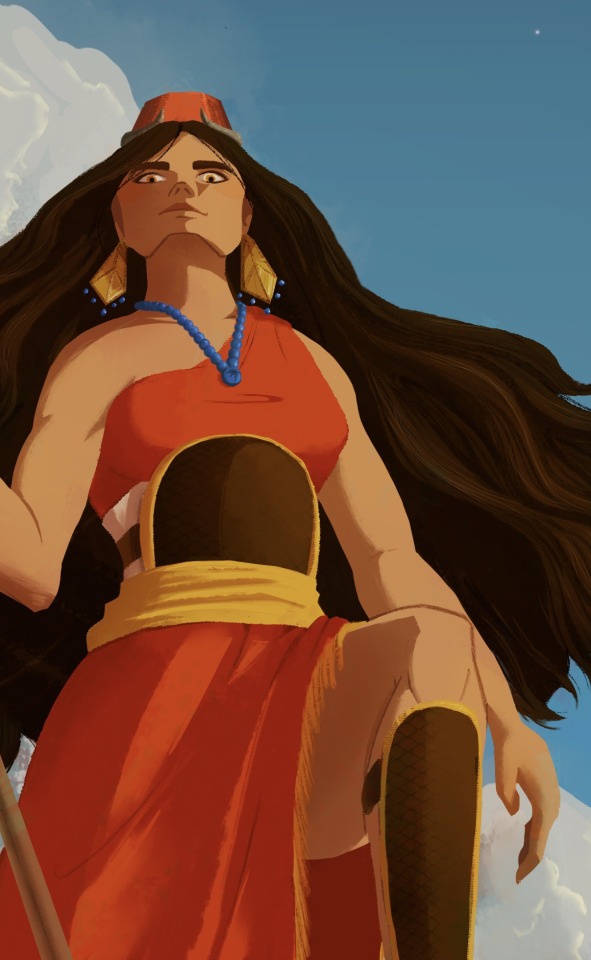

Glorious Ishtar, Lady of War and Desire. ✨ From the first time I encountered her in myth—The Descent of Inanna/Ishtar—at age 15, I was entranced. Powerful, fearsome, and demanding, Ishtar is one of the most enduring and fascinating ancient goddesses.
Here I’ve portrayed her with her vibrant palla, the horned tiara of divinity, lapis beads, and so on. I opted to show her with a spear instead of measuring rod to reflect her warlike nature. The coming storm symbolizes her fury and might, and if you look reaaaaaal close in the upper right, you can see Venus, Ishtar’s star. ⭐️
This piece was also an opportunity for me to practice perspective, drapery, and more complete backgrounds!
#mesopotamian gods#mesopotamian mythology#inanna#ishtar#art practice#glorious ishtar#eli hinze#digital illustration
2 notes
·
View notes
Text
Queen Semiramis || The woman behind the myth

Queen Semiramis was born in a time of conflict, she was born from a fisher woman who could not afford to raise her and had to leave her in a field in the region of Lydia.
Sémiramis had to live off of expenses and learned how to steal, but when she turned 15 she became a priestess of Ningal, she offered sacrifices to the moon and to the rivers and streams, thanks to the help from her adoptive father Sima.
She tried to always honor the gods, especially Ningal, as she was inspired by her story.
Sémiramis sometimes bleached her hair to chestnut when she worked, and took great care of her skin and she had amber eyes.
Sémiramis knew Shamshi-Adad years later when she was 19, when in one royal walk she tripped and fell and Shamshi tried to help her. From then on, Semiramis got to build a temple for Ningal and Shamshi-Adad used to visit her.
Soon, they slowly fell in love and got married and had children starting by Adad Narari.
She made many laws that helped women, like a law that did not allow lord's to make use of "the rights of the first night", she made it possible that girls could inherit and sent many temples to be built so they could receive orphans and poor people.
She helped her husband set strategies to conquer more territories and thanks to her the Babylonian empire was starting to take shape.
After Shamshi-Adad died, Sémiramis acted as regent for her son Adad Narari. She reconquered the Medes, Persia, Armenia, etc.
She remarried the Assyrian king Ninus and had Tammuz.
As Ninus had ashy red hair with strands of honey-blonde hair with dark blue eyes and Semiramis uncommon amber eyes, along with all the conquered territories and that they spoke Babylonian and Lydian tongues now, languages that were starting to be spoken after the Akkadian language, the people started to believe they were gods and soon many tales about them were made.
Semiramis participated in the wars and she was the builder of the gates of Babylon.
When Adad Narari was old enough to rule, he still seeked her for counseling, and he gave his brother Tammuz classes too, as Tammuz would be the heir of Ninus, and he would lead the lydian tribes and elamites tribes that were behind Ninus' command, along with many girls that admired Sémiramis and volunteered to be warriors and died their hairs of dark green and bleached their eyes sea green to mix with the nature.
Adad Narari and Tammuz would live to be heroes and they looked up to their mother who was a queen by her own merit and strength, never losing her titles.
That's how Sémiramis would later be known, a goddess and the queen of heaven.
#queen of the heavens#queen semiramis#semiramis#babylon#Mesopotamia#mesopotamian gods#mesopotamian mythology#babylonian kings#babylonian queens
5 notes
·
View notes
Text
The Christian mind-control Religion despises the feminine - thats why they have "The father (masculine), the son (masculine) and the holy spirit (genderless). That is part of their destructive doctrine. They always feared, hated and suppressed the divine feminine, which is the creative/creating power.
Christianity is actually based on the worship of sumerian/mesopotamian "gods" which were rulers made of flesh and blood. More info: The Eridu Conspiracy | What the Church Doesn't Want You to Know // The Anunnaki Creation Story: The Biggest Secret in Human History // Understanding Anunnaki History, the Return of Enki
#religion#critical thinking#the original cult/religion for all religions were the anunnaki rulers#the gods of the original/old testament are psychopathic and blood thirsty#the father#the son#the holy spirit#mysogyny#sexism#Suppression#mesopotamian gods#mesopotamian worship#sumerian#gods#sumerian clay tablets#christianity#truth seekers#theology
1 note
·
View note
Text
Little Snake Men Behind Goddess Uruk?
Hello, this is both an awareness post and a legitimate question. I am learning about ancient Mesopotamian art; learned about the “Vase of Warka (Uruk)”. In it, she accepts offerings, which you see the process of how they were made up and across the entire vase. From growing to grain, to carrying it, to delivering it. Wondering what these two little guys behind her are? If you look at the full pattern, another one appears by the crowd. My professor referred to it as two columns - an entrance. Usually most our knowledge on Mesopotamian artwork is speculative, but I’m wondering if someone has a more informed opinion (your source also wouldn’t hurt). Also, come on, look at them. I had to share this.


3300-3000 BCE
Warka, Iraq.
#mesopotamia#uruk#goddesses#mesopotamian gods#mesopotamian mythology#archeology#ancient history#iraqi
1 note
·
View note
Text

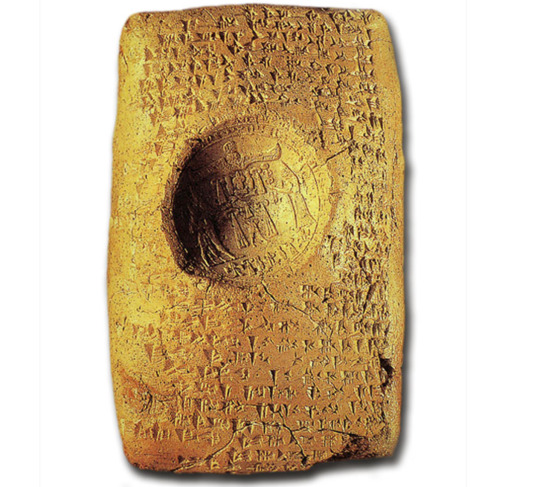
Divorce-Writ of King Ammistamru II
Ugarit, Syria
c. 1250 BCE
A tablet documenting the divorce of King Ammistamru II of Ugarit fromhattusa the daughter of the Amorite king Benteshina, sealed by the Hittite King Ammistamru. The king stands to the right, holding a spear, next to the "Weather God" who holds a club. They are both facing a long-robed female goddess (Arima, the chief Hittite sun-goddess) who stands at the left.
Source: Virtual Museum of Syria
#ugarit#hittite#baal#hadad#ugaritic costume#arima#sun goddess#huttusa#hittite gods#canaan#canaanite gods#phoenicia#phoenician gods#aram#aramean gods#syria#syrian gods#levantine gods#mesopotamia#mesopotamian gods#pagan gods#polytheism#archeology#magic#witchcraft#witchblr#paganblr#occult
266 notes
·
View notes
Text
Fun fact: Unlike most other ancient pantheons, the Nordic Gods have exactly zero instances of direct familial incest

#nonask#denmark#admiralen#fact#nordic gods#norse gods#norse is an antiquated term that should not be used#but the rest of the world hasnt really discovered that so im putting it in the tags#anyway#shoutout to the following:#ancient greek gods#lookin at you zeus#ancient egyptian gods#ancient kemet#most of the old roman gods also#sumerian gods#babylonian gods#all of the mesopotamian deities basically#also i believe ancient chinese gods#and ancient japanese gods most definitely#i mean most of them didnt have much choice true#but some of them DID have options#they just chose not to make use of them#so good work nordic gods for keeping up that genetic diversity
199 notes
·
View notes
Photo
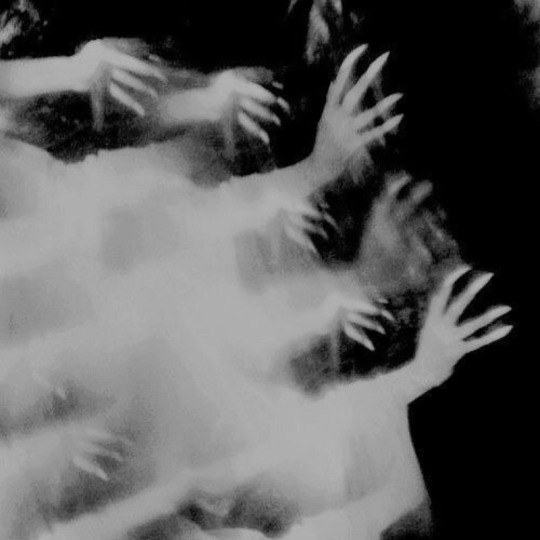








mesopotamian mythology: ershkigal
ershkigal is the goddess of kur, the land of the dead or underworld. in later myths, she was said to rule irkalla alongside her husband nergal.
216 notes
·
View notes
Text
Don't blame someone's disabilities on spirit(s) or God(s).
#ableism#polytheism#paganism#witchcraft#in mesopotamian cosmology/theology the gods or spirits can cause sicknesd and misfortune#but that is between the individual and the spirits/gods#not you#if you do this#you are ableist plain and simple#vague blogging#except not vague
173 notes
·
View notes
Text
Enki: Just be yourself. Say something nice.
Inanna: Which one? I can't do both.
#queue#mythology#mesopotamian mythology#sumerian mythology#incorrect quotes#source: perchance generator#mesopotamian gods#sumerian gods#mesopotamian goddess#sumerian goddess#enki#inanna
22 notes
·
View notes